Author: Jennifer Austin (BSc MS)
If you are experiencing Lymphedema in any part of your body, it is important that you take care when removing any hair in that area.
If you accidently nick or cut yourself you may be increasing your risk of infection in that area.
With there being so many methods available today to remove hair, which is the most suitable hair removal method if you have Lymphedema?
Read on to discover more about this topic.
Why Is It Important To Take Care When Removing Hair If You Have Lymphedema?
Taking extra care when removing hair if you have lymphedema is crucial due to the potential complications and risks associated with this condition.
Lymphedema is characterized by swelling in localized areas of the body, usually in the arms or legs, due to a build-up of lymphatic fluid.
This condition affects the lymphatic system, which plays a key role in fluid balance and immune function.
Here is why careful hair removal is so important:
1/ Risk of Infection
Compromised Immune Function – Lymphedema can impair the immune response in the affected area.
This means that even minor cuts, nicks, or skin abrasions can lead to infections, such as cellulitis, a serious bacterial infection of the skin and underlying tissues.
Open Wounds as Entry Points – When you shave, even with a razor that seems to glide smoothly, there is a risk of creating micro-cuts or nicks.
These tiny openings in the skin can serve as entry points for bacteria, increasing the likelihood of infection.
2/ Skin Sensitivity
Fragile Skin – The skin in areas affected by lymphedema can be more fragile and prone to damage due to the persistent swelling and stretching of the skin.
This makes it easier to accidentally cut or irritate the skin while shaving.
Increased Irritation – Shaving can cause friction, leading to irritation or inflammation of the skin.
In a person with lymphedema this irritation can further exacerbate swelling, or trigger an inflammatory response.
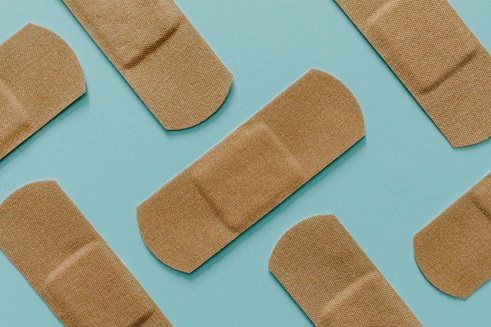
3/ Poor Healing
Slower Healing Process – Due to the impaired lymphatic system, the healing process in lymphedematous areas can be slower.
A small cut that would normally heal quickly might take longer to close and is more susceptible to complications.
Potential for Worsening Lymphedema – An infection or inflammation resulting from a shaving injury can worsen lymphedema, leading to increased swelling, pain, and further complications.
4/ Risk of Ingrown Hairs
Ingrown Hairs and Inflammation – Ingrown hairs occur when a hair grows back into the skin rather than emerging from it.
This can lead to localized inflammation, bumps, and sometimes infection. In the context of lymphedema, ingrown hairs can exacerbate swelling and further compromise skin integrity.
5/ Preventing Exacerbation of Symptoms
Maintaining Skin Integrity – The skin acts as a barrier to external threats such as bacteria and irritants.
By taking care when shaving, you help maintain the integrity of this barrier, which is essential in managing lymphedema.
Avoiding Additional Swelling – Any injury or irritation can lead to an increase in lymphatic fluid build-up, exacerbating the swelling associated with lymphedema.
Careful shaving helps minimize this risk.
What Is The Safest Way To Remove Body Hair When You Have Lymphedema?
There are a number of methods to remove body hair, however there are many considerations when removing hair from a part of the body affected by lymphedema.
Here we will look at the most common hair removal methods, and weigh up which is best for someone with lymphedema.
Can I Shave If I Have Lymphedema?
Shaving with an electric shaver is recommended as one of the safest ways to remove hair if you have lymphedema.
Electric shavers are generally safer than manual razors as they reduce the risk of cuts, and therefore reduce the risk of infection.
However you may wish to avoid shaving as area altogether if the area is particularly swollen, as even the best shaver could potentially nick or cut you.
How to Shave With Lymphedema?
Use a high quality electric shaver with a clean and sharp blade.
Avoid pressing too hard against the skin.
Always ensure the shaver is clean before use to minimize the risk of infection.
What Electric Shaver Is Best For Use With Lymphedema?
A good foil shaver or rotary shaver are the safest options for use on areas affected by lymphedema.
Foil shavers are generally considered safer due to the layer of protective foil included.
Best Foil Shaver For Lymphedema – Foil shavers consist of a protective thin layer of metal (foil) with small circular holes punched through which catch thin follicles of hair.
A great pick for a women’s foil shaver is the Remington WDF5030A.
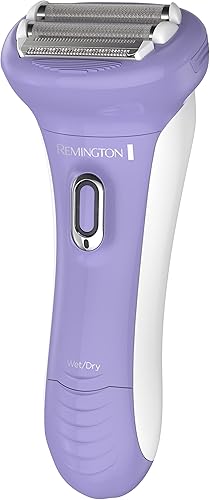
This offers a 4 blade foil shave, which also has an almond oil strip.
Almond oil helps soothe and soften skin, and interestingly is an oil often used in lymphatic draining massage.
This foil razor is suitable for legs and armpits, and also wet and dry use.
Men’s Electric Shavers For Lymphedema – For any men who are experiencing lymphedema who wish to tackle face as well as body hair, consider the Philips Norelco OneBlade 5-in-1 which offers a dual protection system, and also a click-on skin guard for added protection.

Although targeted at men, there are many anecdotes from women borrowing the Philips Norelco OneBlade from their partners, as it handles sensitive and private areas so well!
Can I Wax When I Have Lymphedema?
While some people with lymphedema report waxing with no problems, waxing is generally not recommended for people with lymphedema.
This is due to the risk of skin irritation, trauma, and potential infections.
Also heat from waxing may encourage extra fluid to form in the treated area, which can worsen swelling.
Can I Get Laser or Electrolysis Hair Removal If I Have Lymphedema?
The safe use of laser hair removal on someone with lymphedema is a debated point.
You will often hear anecdotal accounts from people who have used this without issue.
However, skin affected by lymphedema is easily damaged, and lasers or electrolysis may cause damage and irritation to the hair follicles and skin.
A safe approach would be to consult with a dermatologist, or a certified laser technician who is experienced with lymphedema patients.
They can assess your skin and lymphatic condition and advise on the safest approach. Ensure the area is not inflamed or swollen before treatment.
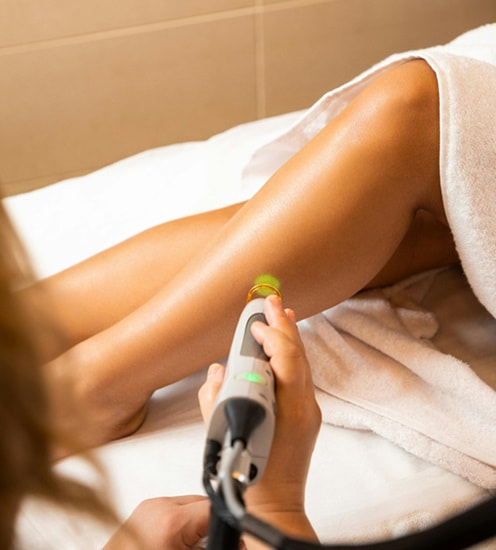
Can I Use Hair Removal Cream (Depilatories) When I Have Lymphedema?
As with waxing, many people will use depilatories without issue.
However they do have the potential to irritate or even damage fragile areas of skin due to the strong chemicals contained in them.
If you do decide to use depilatories, perform a patch test on a small area of skin to ensure you do not react to the cream (as recommended by CR UK).
Choose a mild formula suitable for sensitive skin, and follow the instructions carefully, ensuring you avoid using the cream on broken or irritated skin.
Rinse thoroughly afterwards and apply a soothing, hypoallergenic moisturizer.
Can I Use Sugaring For Hair Removal If I Have Lymphedema?
Sugaring consists of applying a paste to your body composed of mainly sugar, lemon juice, and water.
Whilst similar to waxing, sugaring is considered the less painful method of the two. This is due to the hair being pulled in an opposite direction to waxing.
Even though this is considered a less painful method compared to waxing, sugaring could still damage the skin increasing the risk of infection.
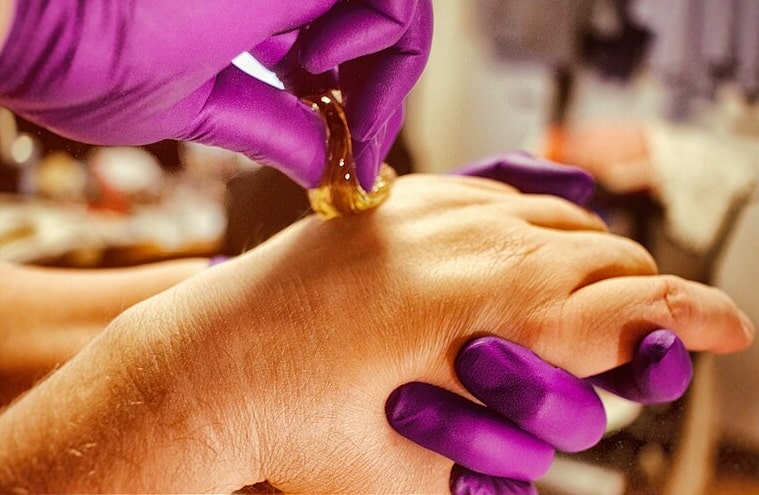
Can I Use An Epilator For Hair Removal If I Have Lymphedema?
An epilator is a hair removal device that works by mechanically grasping multiple hairs simultaneously and pulling them out from the root.
In this respect it is similar to waxing in that it removes hair at the root level, however it differs in its method.
If you have lymphedema, use an epilator with caution. The pulling action of the device could potentially irritate the skin and cause inflammation, which might exacerbate lymphedema symptoms.
Additionally, the risk of ingrown hairs or small injuries from the device might increase the chances of infection.
It is advisable to consult with your healthcare provider, or a lymphedema specialist before using an epilator, to discuss whether it is a suitable option for you.
Can I Pluck Hair If I Have Lymphedema?
Plucking hair should also be approached with caution, as it carries risks.
Risks include skin trauma leading to inflammation, infection risk, and ingrown hairs.
If you do choose to pluck ensure you sterilize tweezers first, cleanse the area, mositurize afterwards, and monitor the skin.
Conclusion
As you can see, any hair removal method caries risk if you are doing it on a body area that is affected by lymphedema.
The use of an electric razor is generally considered the safest method to remove hair if you have lymphedema.
You may wish to try the other methods listed here, however it may be beneficial to speak to your healthcare provider, or a lymphedema specialist beforehand.
Click this link here to read our other articles on skin care with lymphedema.
Disclaimer – The information on this website is for informational purposes only. Lymphedemalifeline.org and it’s staff, writers, etc. assumes no responsibility for any consequences arising from any use made of, or any reliance on, the information contained on this website.
Affiliate Disclaimer – lymphedemalifeline.org is a participant in the Amazon Services LLC Associates Program, an affiliate advertising program designed to provide a means for sites to earn advertising fees by advertising and linking to Amazon.com.

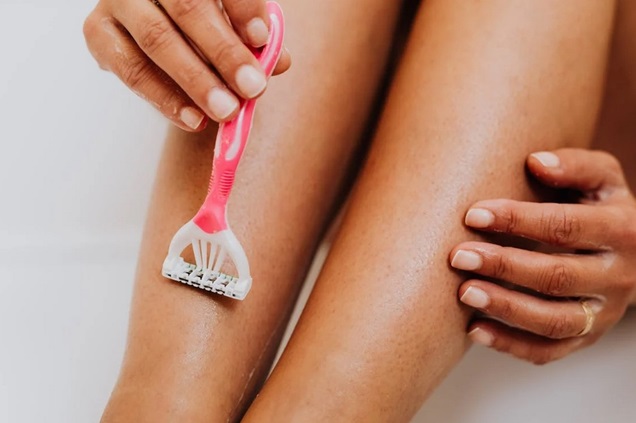
1 thought on “Removing Body Hair Safely When You Have Lymphedema”